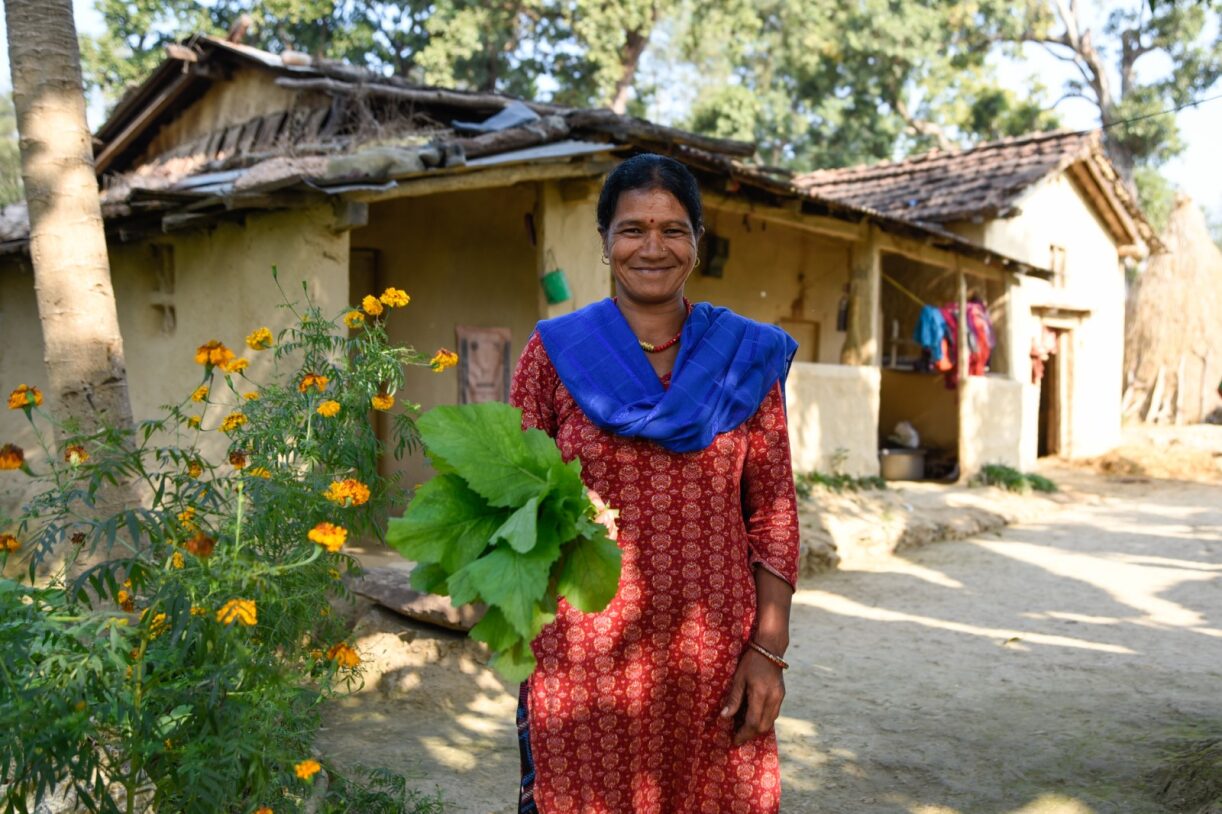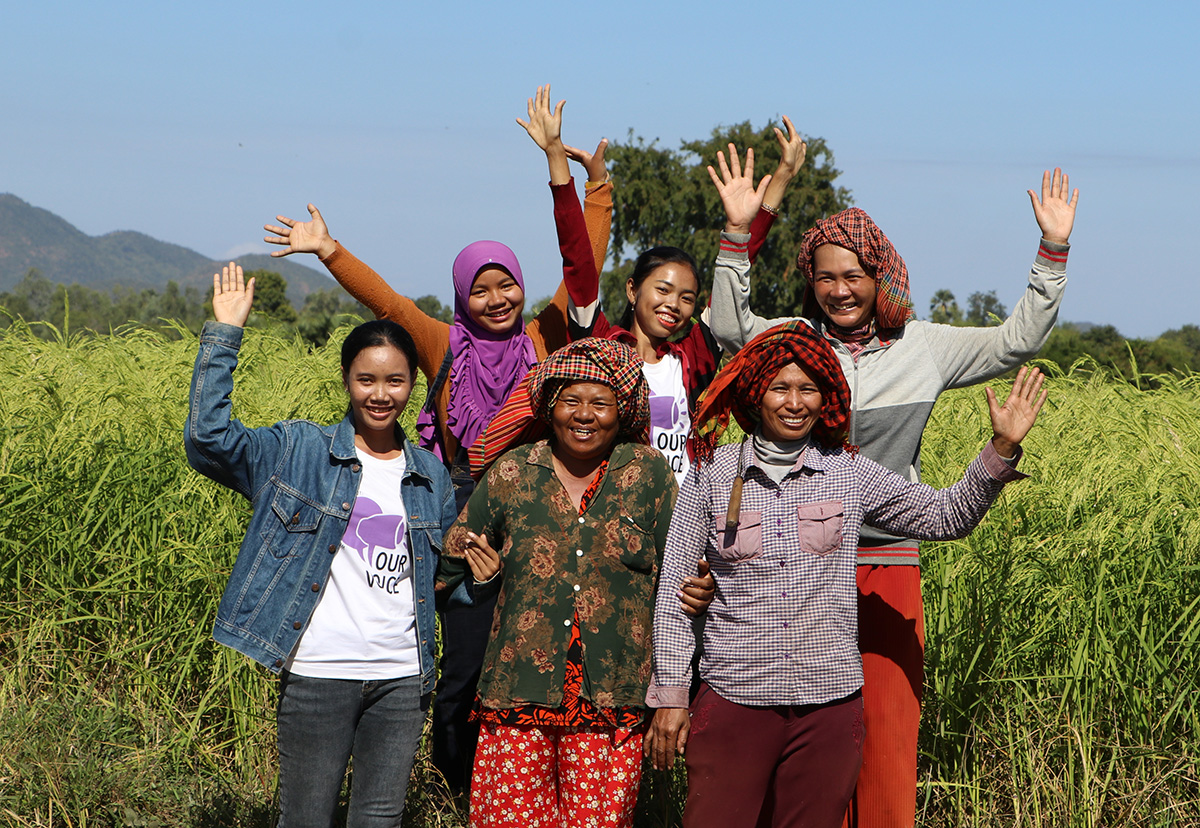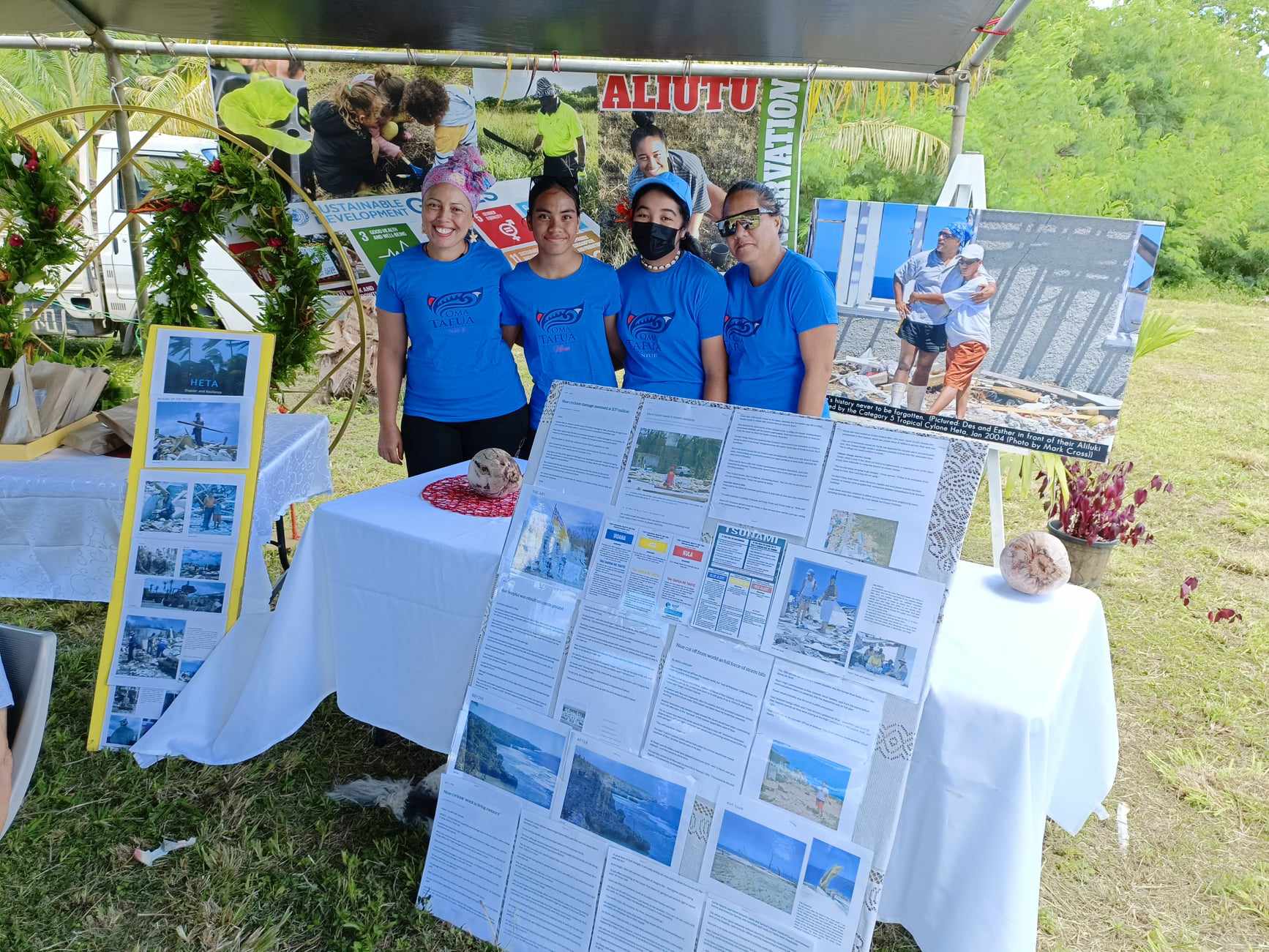Human rights-based approach in IUCN’s Global Standard for Nature-based Solutions
The 55th session of the UN Human Rights Council in Geneva concludes this week. As usual, ‘human rights and the environment’ has been one of the usual themes of the Council's March session. One of the insightful events organised in the margins of this session, in which IUCN participated, was entitled 'No Nature-based Solutions without a human rights-based approach'.
In this blog, I would like to show how the human rights-based approach is embedded in the IUCN Global Standard for Nature-based Solutions.
A human rights-based approach (HRBA) in the context of Nature-based Solutions (NbS) means that any NbS action must not risk violating rights and must seek to promote and protect human rights.
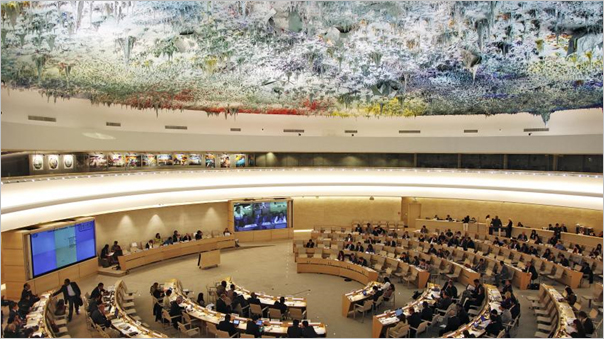
United Nations Human Rights Council room
The IUCN World Conservation Congress in 2016 defined the concept as “actions to protect, sustainably manage and restore natural or modified ecosystems that address societal challenges effectively and adaptively, simultaneously providing human well-being and biodiversity benefits”. To ensure its application is credible and its uptake is tracked and measured for adaptive management, IUCN then developed and published the IUCN Global Standard for Nature-based Solutions in 2020. The IUCN definition's equal emphasis on human well-being and biodiversity benefits has guided the overall framework of the Global Standard. In 2022, IUCN welcomed the adoption of the first multilaterally agreed upon definition of Nature-based Solutions by the members of the United Nations Environment Assembly, and offers its NbS Global Standard for the implementation of this resolution.
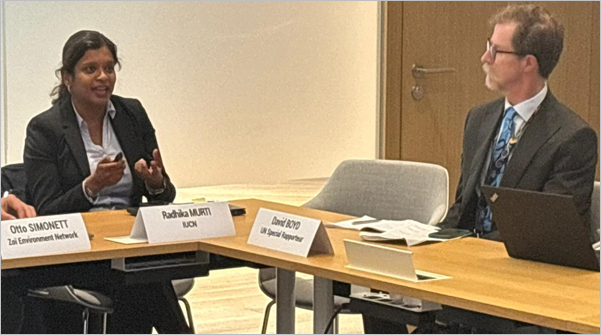 Radhika Murti, Director of IUCN Centre for Society and Governance
Radhika Murti, Director of IUCN Centre for Society and Governance
As per definition, if a solution doesn't deliver both human well-being and biodiversity benefits, it's either development, which is unsustainable, or it's pure biodiversity conservation. It's not a Nature-based Solution. (Radhika Murti)
The IUCN Global Standard has 8 criteria and associated 28 indicators, accompanied by a guide and an online self-assessment tool.
The Standard provides a robust framework for designing, implementing, evaluating, adapting and improving NbS. It aims at helping users shape their solutions and make them truly effective. For an action to be truly NbS, it must fulfil all the criteria, taking into account the interconnections and interdependencies between them.
The Standard includes explicit criteria (c) and indicators that provide guidance on respecting and upholding the rights of people, particularly indigenous peoples, and local communities. Five of the eight criteria, i.e. criteria 1, 5, 6, 7, and 8, and more than half of the indicators relate to human rights.
An NbS must respond to the most pressing societal challenge(s) identified as a priority by rightsholders and beneficiaries (c.1). However, the question is how and by whom the most pressing societal challenge(s) will be decided. Criterion 1 requires the identification of the most pressing societal challenge(s) by those who are or will be directly affected. In other words, the decision-making process for this identification must ensure the involvement of all stakeholders, in particular rights holders and beneficiaries, through a transparent and inclusive consultation process as specified in criterion 5 (c.1.1).
Similarly, assessing whether the societal challenge(s) being addressed are clearly understood and documented, or periodically assessing whether NbS are delivering tangible and substantial benefits to human well-being, inherently requires stakeholder involvement in the monitoring of NbS implementation (c.1.2-1.3).
Criterion 5 is the backbone of the HRBA embedded in the IUCN Global Standard. It is the explicit recognition of the right to participate in NbS. As highlighted in UN OHCR Guidelines, participation enables the advancement of all human rights playing a crucial role in the promotion of democracy, the rule of law, social inclusion and economic development. It reduces inequalities and social conflict and empowers individuals and groups. It is one of the core elements of HRBAs aimed at eliminating marginalization and discrimination.
Criterion 5 requires NbS to be based on inclusive, transparent, and empowering governance processes. It is only through such a process that the concerns of a wide range of stakeholders, in particular rights holders, can be heard and addressed. A well-functioning feedback and grievance mechanism with robust rules and procedures is an important means in ensuring that NbS provides expected human well-being and biodiversity benefits, and the rights are respected. The criterion recognises the adherence to rights as one of the characteristics of an effective grievance mechanism (c.5.1)
According to indicator 5.2, participation must be based on mutual respect and equality, regardless of gender, age or social status, and must respect the rights of indigenous peoples to free, prior and informed consent (FPIC). The criterion also requires mapping and analysis of all stakeholders who may be affected by the NbS and ensuring their involvement in all processes of the NbS intervention. This allows the intervention to afford opportunities to affected stakeholders to engage with and participate in the design and implementation, advocate clearly to uphold their own rights and interests, and where necessary, prevent further marginalisation (c.5.3).
In order to enhance accountability and provide a strong basis for recourse in the event of disputes or disagreements, the criterion requires that the decision-making process documents and responds to the rights and interests of all participating and affected stakeholders, with particular attention to stakeholders with extreme inequalities (c.5.4).
As ecosystems do not respect political and administrative boundaries, and in such cases where the scale of the NbS transcends jurisdictional boundaries, the Global Standard requires the establishment of mechanisms to enable joint decision-making by stakeholders in affected jurisdictions (c.5.5).
Guidance of the criterion 5 underscores the need for basic compliance to be complemented with ancillary mechanisms that actively engage and empower local communities and other affected stakeholders. Unless they are empowered and equipped with the knowledge and capacity necessary to claim and exercise their rights, it would not be possible to create a truly transparent and inclusive environment that values and considers the concerns and contributions of all affected stakeholders.
The Global Standard recognises that trade-offs in land and natural resource management is inevitable, but they can be effectively and equitably managed through a fair, transparent, and inclusive decision-making process. Such a process must involve a credible assessment, full disclosure, and agreement among the most affected stakeholders on how the trade-offs should be addressed. This process cannot be ensured without acknowledging, respecting, and upholding the rights of affected stakeholders. It requires that NbS safeguards are put in place to ensure that the necessary trade-offs do not adversely affect the most disadvantaged segments of society or, conversely, deny them access to the benefits of the intervention. But the essential aspect of these safeguards is that the costs and benefits of trade-off arrangements are fully understood, widely shared among affected stakeholders, and regularly reviewed (c.6.1). According to indicator 6.2, legal and customary rights to access, use and control management over land and natural resources, especially those of vulnerable and marginalised groups, including FPIC rights in the case of indigenous peoples, must be respected and upheld. This primarily requires the analysis and assessment of the rights, uses and responsibilities of stakeholder groups in relation to the NbS, using appropriate tools and building on the results of the stakeholder analysis or mapping as described in c.5.3 (c.6.2). Criterion 6 also requires a regular review of the established safeguards with a view to ensuring that mutually agreed trade-off limits including the rights of stakeholders are respected and upheld (c.6.3)
Criterion 7 requires that NbS implementation plans allow for adaptive management to respond to uncertainties and planetary or societal changes, and to effectively harness the resilience of ecosystems. Such adaptive management requires the development and implementation of a monitoring and evaluation plan throughout the life cycle of the intervention to observe and understand whether the NbS strategy adopted is effectively delivering the intended results, or whether the risks or unexpected outcomes require a change in strategy or action (c.7.2). This monitoring and evaluation plan must also be used to assess the risks of human rights violations caused by or related to the implementation of the NbS and to trigger an adaptive management response to minimise or eliminate these risks.
According to Criterion 8, NbS must be designed and managed to achieve long-term sustainability and they must take account of, work with and align with sectoral, national and other policy frameworks sustainable and mainstreamed within appropriate jurisdictional context. There is a growing recognition of the linkages between human rights and the health of the biosphere. Not only are the human rights we all enjoy intricately dependent on a healthy and safe environment, but the recognition of human rights can itself be essential for restoring and protecting healthy ecosystems. The Global Standard therefore requires NbS to inform and improve enabling policy and regulatory frameworks, including human rights frameworks, to support its uptake and mainstreaming (c.8.2). Recognising the link between human rights and a healthy ecosystem, indicator 8.3 explicitly requires that NbS contribute to, inter alia, human rights, including the UN Declaration on the Rights of Indigenous Peoples.
In summary, as described above, the human rights-based approach underpins the IUCN Global Standard for Nature-based Solutions by requiring a fair, transparent and inclusive decision-making process, which must be implemented by respecting and upholding rights from the stage of defining the most pressing societal challenge to be addressed, through the entire implementation phase of the NbS, regularly monitored and evaluated, and adjusted as necessary. Exclusionary NbS actions that disregard the rights of affected societies, especially indigenous peoples and local communities, will not contribute to solving our planetary emergencies, but will instead perpetuate the historical and ongoing dispossession and alienation of peoples from nature and their lands and territories.
Contact us
Reach out to the NbS Management Hub should you need further information on Nature-based Solutions!
Disclaimer
Opinions expressed in posts featured on any Crossroads or other blogs and in related comments are those of the authors and do not necessarily reflect the opinions of IUCN or a consensus of its Member organisations.
IUCN moderates comments and reserves the right to remove posts that are deemed inappropriate, commercial in nature or unrelated to blog posts.
